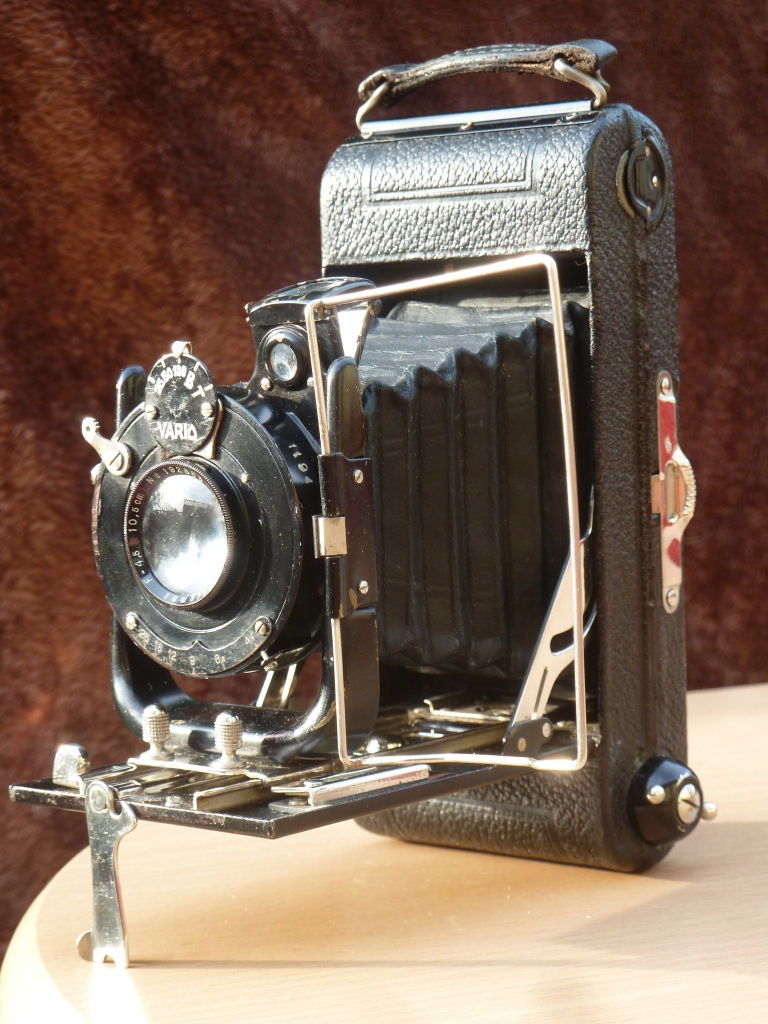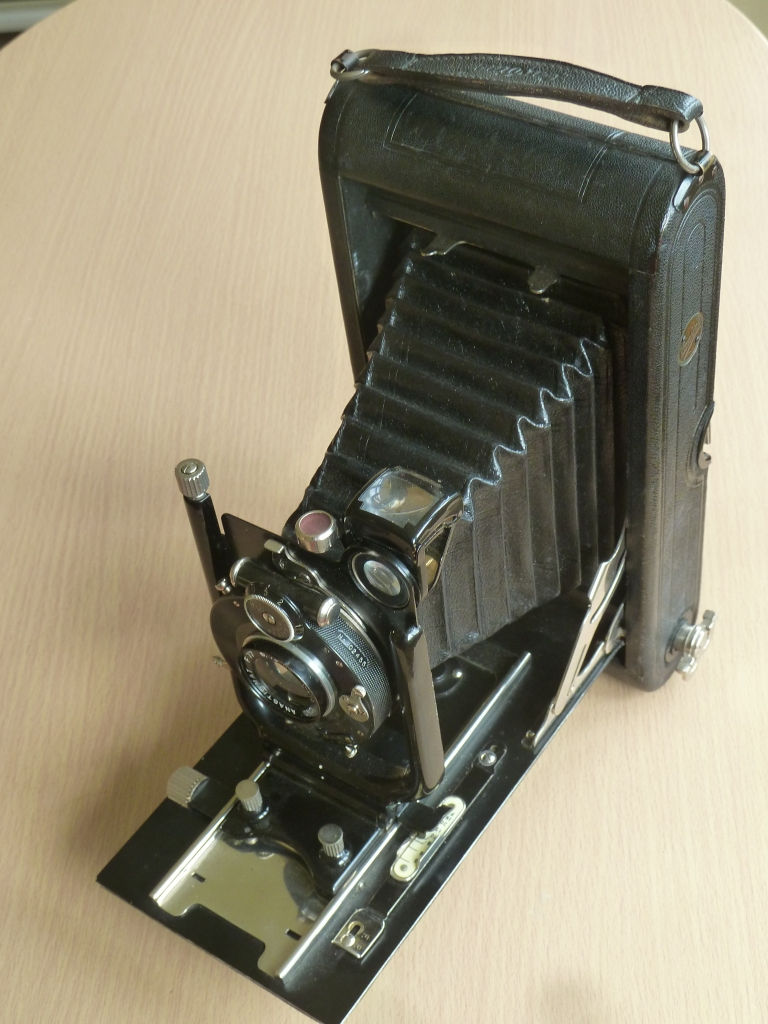1950 Ensign 16-20 Folding Camera
- Kamera Ostalgie

- Apr 13
- 5 min read
Updated: Sep 21
It's funny, you start searching for one thing, you don't find it, but you find other very interesting items in the process! I still have not located the Weltaflex that I have been searching for, but I did find this...

No, I did not have a clue what it was either, apart from that it was an Ensign

This is what I found, faintly embossed in the leatherette covering were the words Ensign Selfix 16-20
Better have a look then,

Now this looks a very interesting camera

So here it is, a nice compact folding camera from around 1950, for 16 exposures on a 120 film and after some research also for 620 film too. It's a neat, solid well made little camera, quite heavy at 611 grams, roughly 12cm by 9cm so very pocketable, so a lot of medium format camera for very little room.

I mean I would much rather carry this around all day than a big TLR.

The lens is a 75mm Ross Xpress and is quite fast for a medium format camera at f3.5. Now I have used a camera with a Ross Xpress lens before, a long time ago and I found it to be a cracking lens, the MPP Microcord which was fitted with the Xpress was better than my Rolliecord with a Tessar, so yes this folder comes fitted with a serious and very capable lens.

This particular lens is number 255271 and it looks very bright and clear despite its 75 years of age! It will be interesting to try this out.

The shutter is an Epsilon shutter which were fitted to many of the various Selfix cameras. This one has speeds of T, B, 1, 2, 5, 10, 25, 50, 100, and finally 300th of a second. So a decent range of shutter speeds. I have read a few modern reports that are not very complimentary of the Epsilon shutter, however I'm not knocking them at all myself, as this shutter has not been fired for over 20years, I have just tried it on 1 second now, as I'm typing, it produced 1 second smoothly, without a stutter or hesitation! Good enough for me.

Its funny, you get a couple of bad reviews online on camera shutters that are 50 or 100 years old or so and it sticks, the reviewer will have no idea on the conditions the camera has been used in or stored in, then will compare it to another make of shutter of which they again have no idea of its use or history and make a profound statement that one is good the other not ! Lets face it, it is a bonus if any aged shutter is still working today and really should we not be getting them cleaned and serviced now anyway before regular use? Only then can we really compare them in my opinion.

There are lots of nice features on this Ensign Selfix 16-20, look at this above. Ensign have given you two gentle nudges to wind on your roll film before trying to press the shutter, one is visual, the little red mark next to the wind on knob, this red line disappears once you remember to wind on, the other is this little blunt needle inside the shutter button, that gives you a gentle prod on the finger end telling you to wake up! At least I think that is what it is for ! Priceless ! You would not find this on your Nettar or Welmy Six!

This depth of field scale is unusual, the outer ring rotates so you can read off your depth of field at a particular aperture. Balda folders had a nice brass table to read off, but Ensign have gone one better!


But my favourite design feature on the Ensign 16-20 is this double hinge, which I suppose is so that the camera back swings right over out of the way, to give you access when changing your film, amazing, such attention to detail here.

Everything looks to have been thought about on the 16-20, here we have a spring underneath the film and a nice clear arrow on the chrome catch to open the camera back. Love it.

There is nothing I don't like about this camera, it is just pure class. However it is a pity that there is not an accessory shoe to mount a little rangefinder, I'm not perfect with my distance guesstimates ! But I suppose it's not a real hardship to carry one in your pocket is it.

Body number H 6046 is this particular example

Ensign struggled to corner the quality folding camera market after the second world war. There was nothing wrong with its products either quality or product range and you would of thought that post war anti German feeling in Britain would have helped them to some degree. They matched their biggest rivals in Zeiss-Ikon with their Nettars, Ikontas and Super Ikontas in all aspects, but this did not really happen. The British public still had this mental perception that German cameras were the best, maybe that is why Ensign came out second best, or did they just get complacent?

I'm not sure, some reports say that there was not much research and development capital left after the war to develop things further and this maybe was why Ensign did not enter the 35mm game which definitely was a mistake. Some say that the management were stuck in the past, convinced roll film was the way forward and 35mm would never become the most used format. Maybe Britain just won the war, but lost the peace.

Whatever the reason the Ensign, Ross, Houghton, Barnet, Butcher conglomeration, call it what you will, did not survive and went from the largest British photographic company in the 1930's to total oblivion some time in the 1960's. One thing is certain, they produced some fantastic quality folding cameras along the way and in the 1950's in the world of folding cameras they were King.

Looking at it today we have the advantage of there being a pool of old Ensigns available for us to collect and to use, so lets collect them and use them, 120 film is still available, there are lots of Ensigns still available on line if you are not lucky enough to have one already, so why not buy one and try it out? They are slowly going up in price, maybe now is the time to buy?
I hope you enjoyed this post, I have another couple of Ensigns to review so whilst I'm on a roll I will write about them shortly! My next job is to buy some 120 film and give them a go! Can't wait to try this one out!
Take care,
Phil



